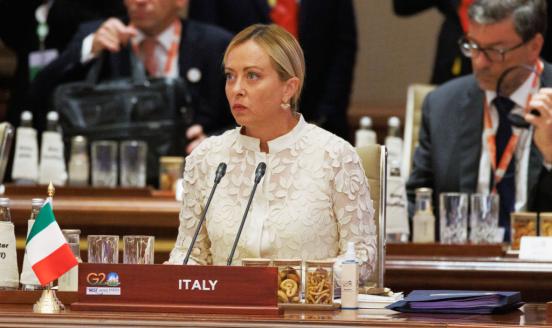The Italian mini-BOT debate
Talks of parallel currency are not new in Italy. But one of the proposals – the so called mini-BOT – has made it into the government contract that und

Precedents
In the Italian context, Bossone and Cattaneo proposed in 2016 the “Tax Credit Certificate” (TCC), which they equated to a “helicopter tax credit”. Much as helicopter money is evocatively distributed across the economy for free, TCCs as helicopter bonds would be assigned free of charge by the government to households and enterprises. Bossone and Cattaneo argue that the Tax Credit Certificate system is projected to accelerate Italy’s recovery and will likely be sustainable. It also provides a tool to avoid the breakup of the Eurosystem and its potentially disruptive consequences.
Amato, Fantacci, Papadimitriou and Zezza proposed in 2016 introducing a parallel electronic currency called “geuro”. They argue that in the short and medium term, the “geuro” would foster demand, growth, and employment. In the long run, the parallel currency could transform the euro into a “common clearing currency” while the “geuro” would be used for payment between private agents. As long as the government could keep the credibility of the new currency, prices in euro or in a new currency would have no reason to differ.
Views on mini-BOT
Francesco Papadia and Alexander Roth have a good summary of the features of mini-BOT. They write that the economic evaluation of mini-BOT very much depends on its specific characteristics. Overall it appears to be a blend of an inferior security and inferior money. If mini-BOT would allow an increase of the budget deficit, they should be evaluated as fiscal expansions, not just as a technical change in the funding of a given deficit.
More important than their specific characteristics would be the message that mini-BOT would send about Ital-exit. Inevitably, given what the League and its representatives have said and written, mini-BOT would be seen as a first step in the exit of Italy from the euro, reinforcing denomination risk attached to Italian securities and thus increasing their yield, even if eventually Ital-exit and its huge negative effects were avoided. The mini-BOT would not break any EU or Italian law if they were just a security, but would be inconsistent with the existing European legal framework if they would become a parallel currency.
The Central Bank of Italy published a note (in Italian) on fiscal currencies. In it, they clarify that the instrument would have no value as legal tender, being in violation of Art. 128 TFEU and Reg. EC/974/98 (art. 2, 10, 11). This “currency” would thus only serve the purpose of storing value, and in that it would be very similar to a government bond. Based on current legislation, it could be used as a means of payment only with creditors’ consent. If the State instead decided to unilaterally get rid of its debt by settling them in a currency different from the legal tender, this would violate EU law and have negative reputational consequences.
Moreover, the creditors of the State would undergo a reduction in their income – if they were forced to accept settlement in fiscal currency – because the latter would be worth less than the legal tender in all exchanges with parties other than the State. The Bank also clarifies that these instruments would increase the state debt from an accounting perspective; they could only be issued within the SGP limits; and they would be costly for the State both in terms of risk premium and in terms of the need to set up a new and ad hoc payment system in which these could be used.
Maria Cannata writes (in Italian) that mini-BOT and CCFs (fiscal certificates of credit) are experiments bound to fail, much like similar experiments of the past. Mini-BOT would constitute public debt, even though their characteristics would make them closer to “currency” – one reason why they would immediately violate Art. 128 TFEU on the exclusivity of the euro as legal tender.
If the mini-BOT were intended as a means to settle tax payments, they would count as an increase in the State’s financial debt and they would reduce tax revenues. In a way, they would act as a debt multiplier, which is the opposite of the declared objective. The CCFs are a variation on this theme. According to their proponents, CCFs would have a market and could be used to settle regular commercial transactions, but would not count as debt according to the Maastricht definition because they would fall into the category that Eurostat labels as “non-payable deferred tax assets”.
Cannata argues that CCFs imply a commitment of the State to recognise their value, and so they qualify as financial debt: once used as a means of payment they would become actual financial debt. If – as proponents argue – they were also given to civil servants as additional payments, they would increase the deficit too. Cannata concludes with a reminder that similar schemes have been tried before in California, Argentina and 1933 Germany, and they have failed.
The Italian blog KeynesBlog (in Italian) has a discussion of the CCTs and Mini-BOT, arguing that they are a “boomerang”. On CCFs, Iodice and Fazi write that the proponents put too much emphasis on the idea that currency has value because it is used to pay taxes, and overlook the fact that a legal tender is worthless absent of trust in the credibility of whoever issues it.
The experience of California, often cited as an example, was not a success: just a few days after California issued its IOUs, the main banks refused to accept them. Only after significant expenditure cuts did some of the banks change their stance. If such an operation has shown its limits in California, a richer US state, the hope that it could work in countries like Italy is small indeed. As for the mini-BOT, the assessment of KeynesBlog is the same, possibly made worse by the fact that these are – according to the proponents’ own words – seen as a way to create better conditions to exit the euro.
Toby Nangle is torn. In his first quick thoughts on mini-BOT, he argues that whether or not they are legal tender is not the big deal – the problem is that governments don’t usually do this sort of thing unless they are in trouble, so the signalling is pretty terrible. They would likely turn out to be a strong reminder that the Italian state is not the monetary sovereign, and would be the subject of a big fight in Brussels as the Commission called them out as debt, which would need to be included in euro-zone-specific debt numbers.
In his second thoughts, Nangle concludes that mini-BOT would become self-defeating as they collect in the Italian treasury rather than among the population as a whole, who prefer to amass monetary assets in euros unless tempted by discounts to par (and hence higher implied financing rates for the state) on mini-BOTs. Meanwhile, the Commission would likely look at mini-BOT as debt and, given that they look to be zero-coupon, would likely see them as tradable to next put date, which is to say having very short-term structure no matter how irredeemable they profess to be.
Nangle argues that there is a second way that miniBOT are interesting, and that is as an asset conjured out of nothing that has value to people in such a way as to create demand for a permanent stock (e.g. a currency). In such a light, the scheme looks pretty identical to the creation of a new form of Outside Money, but for it to actually properly work the State would need to require the payment of taxes in miniBOT rather than simply accept the payment of taxes in miniBOT. In accepting rather than requiring, we get back into Gresham’s Law problems: the miniBOT would need to have an implicit financing cost. And because of this the State would endure a weaker fiscal position than it would otherwise have (paying more in miniBOT than it would have needed to pay in euros, but receiving back an equal number of miniBOT to the number of euros it would otherwise have received in tax revenue).
John Dizard writes on the FT that the menace of Italian mini-BOT has made European monetary policy interesting again. While mini-BOT would almost certainly trade at a discount in the marketplace, the paper (or book entries) could be used to settle tax debts or pay public-sector entities at the mini-BOT’s par value. Despite this, the populist parties continue to insist that mini-BOT would not be a parallel currency or a backdoor way to add to the national debt. Since the mini-BOT would not be currency, transfers from account to account or hand to hand would not be subject to the €3,000 legal limit on cash payments within Italy. Mini-BOT, then, would stimulate the vibrant informal sector of Italy’s economy. The big profits would go to those who would buy mini-BOT from pensioners and state creditors at a discount, and then sell the quasi-currency to deep-pocketed buyers of Italian goods and services, or property and equities.



